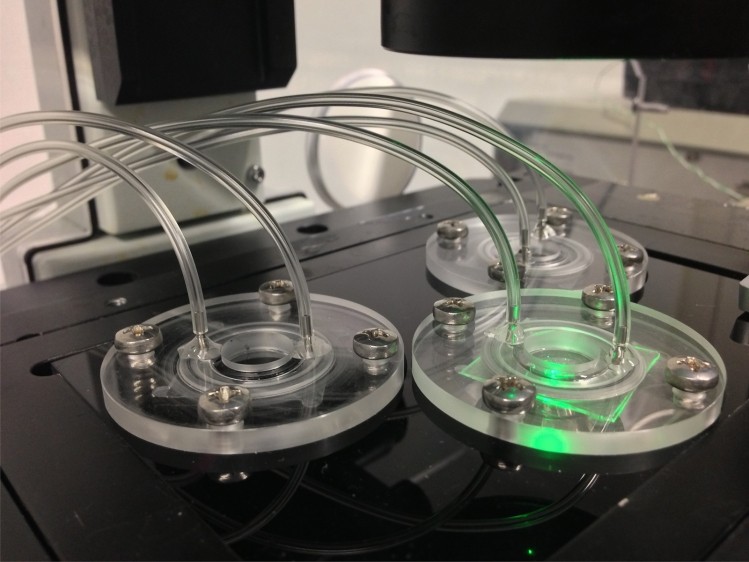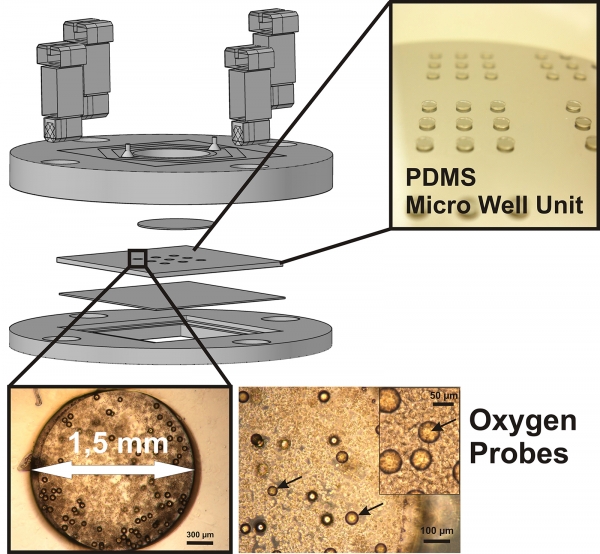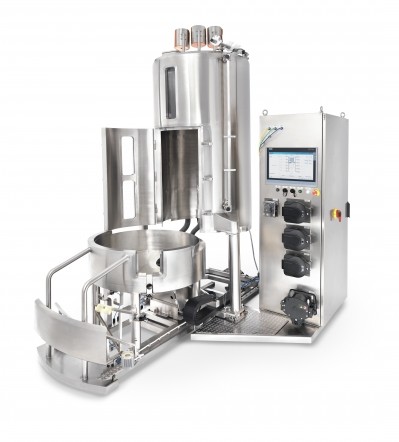Microbioreactor could replace animal testing

The Fraunhofer Institute for Cell Therapy and Immunology IZI in Potsdam, in collaboration with partners at the Hebrew University of Jerusalem, developed the microbioreactor as part of the HeMiBio (Hepatic Microfluidic Bioreactor) project.
HeMiBio is one of the six research projects funded with the aim of developing a device that simulates the human liver’s structure, providing an alternative to animals testing in the pharmaceutical and cosmetic industry.
The device is also more advantageous than traditional animal testing, as it allows researchers to study how liver cells react to substances directly and in real-time.

“Up to now, both in animal testing and in conventional lab tests, measurements have usually only been made at the end of the test,” says Dr. Claus Duschl, cellular biotechnology department head at the IZI.
“The procedure consists of administering different doses of an active ingredient and subsequently analyzing the areas of dead tissue or the dead animal. It is not possible to determine the precise effect of the active ingredient on the cells using this method.”
Real-time oxygen sensing
The microbioreactor features miniature sensors that gather real-time data on oxygen amounts being absorbed by the liver cells, which can remain alive for observation for up to one month.
With access to this information, researchers can record the metabolic processes taking place, and subsequently determine whether or not an active ingredient is affecting or halting the procedure.
“While working on this project with cell biologists at the Hebrew University of Jerusalem, we have been able to verify various hypotheses by selectively replacing specific metabolic products whose synthesis had been blocked by the toxic substance,” Duschl explained. “As we had surmised, the metabolic process then continued unaffected to the next stage.”
To create the reactor, the researchers needed to design a vessel containing numerous microfluidic channels. The biggest challenge in doing this was ensuring that the cells were equally supplied with the growth medium.

“What we needed was a sensor technology capable of dealing with a high concentration of cells, without the risk of interference effects that would falsify the test results,” explained Duschl.
The solution uses tiny polymer particles containing a luminescent dye that emits a phosphorescent glow under a monochromatic LED light source, which raises them to a higher energy level. The time it takes the electrons to return to its original energy level is then directly correlated to the oxygen concentration in the air.
“In other words, the time this takes indicates the presence of metabolic activity, and can be used to measure the effect of the toxic substance,” said Duschl.
The microreactor functions as intended, but the next step is to fill the reactor with various cell combinations. “In this way, we will be able to improve our ability to simulate metabolic processes,” said Duschl.
In the future the researchers hope to combine different organ tissue samples in a single reactor, “But we still have a long way to go.”








